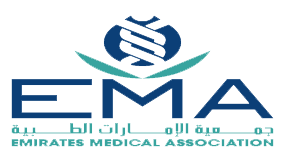Can a Tummy Tuck Be Done Under Local Anesthesia?
Introduction to Tummy Tuck Procedures
Overview of Abdominoplasty
Abdominoplasty, commonly known as a tummy tuck, is a surgical procedure aimed at creating a firmer, smoother abdominal profile. It involves the removal of excess skin and fat and the tightening of abdominal muscles to achieve a contoured midsection.
Dubai Abdominoplasty Services help people get a flatter tummy by removing extra fat and skin. it’s like a special surgery to make your belly look better!
Dr. Shehzadi Tasneem Sultan’s Approach to Tummy Tucks
Dr. Shehzadi Tasneem Sultan, a renowned plastic surgeon, tailors each tummy tuck procedure to the individual’s needs, ensuring personalized care and optimal results.
Book A Consultation With Dr Shehzadi Tasneem
Top-rated Plastic Surgeon For Tummy Tuck in Dubai
Installment Plan Available
Can a Tummy Tuck Be Done Under Local Anesthesia?
Understanding Local Anesthesia in Cosmetic Surgery
Local anesthesia involves numbing a specific area of the body, allowing patients to remain awake without feeling pain during the procedure.
The Concept of an Awake Tummy Tuck
An awake tummy tuck is performed under local anesthesia, with the patient conscious but comfortable throughout the surgery.
Benefits of a Tummy Tuck Under Local Anesthesia
Advantages of Local vs. General Anesthesia
- Reduced risk of complications associated with general anesthesia
- Quicker recovery time
- Lower overall cost
Patient Safety and Comfort
Local anesthesia can offer a safer alternative for patients with certain health conditions, and it can enhance comfort by reducing post-operative nausea and grogginess.
The Procedure of a Tummy Tuck with Local Anesthesia
Preparing for Surgery with Dr. Shehzadi Tasneem Sultan
Patients undergo a thorough pre-operative evaluation to ensure they are suitable candidates for a tummy tuck under local anesthesia.
The Step-by-Step Process of a Local Anesthesia Tummy Tuck
- Administration of local anesthesia to the abdominal area
- Surgical removal of excess skin and fat
- Tightening of the abdominal muscles
- Closing of incisions with sutures
Recovery and Results from a Local Anesthesia Tummy Tuck
Post-Procedure Care and Recovery Time
- Detailed post-operative instructions provided by Dr. Sultan
- Shorter initial recovery period compared to general anesthesia
- Gradual return to normal activities
Anticipated Results and Scarring
- A flatter, more toned abdomen
- Visible scarring that fades over time
- Long-lasting results with proper diet and exercise
Candidacy for a Tummy Tuck Under Local Anesthesia 
Ideal Candidates for an Awake Tummy Tuck
- Individuals in good overall health
- Non-smokers
- Those with realistic expectations
Personal Consultation with Dr. Shehzadi Tasneem Sultan
A one-on-one consultation is essential to determine if a tummy tuck under local anesthesia is the right choice for you.
Cost Considerations for a Tummy Tuck Under Local Anesthesia
Factors Affecting the Cost of an Awake Tummy Tuck
- Surgeon’s expertise
- Complexity of the procedure
- Geographic location
Financial Planning for Your Procedure
- Understanding the total cost
- Considering financing options
- Evaluating the value of the investment in your well-being
Related Treatments and Procedures
Mini Tummy Tuck: A Less Invasive Option
A mini tummy tuck is a less extensive procedure that targets the lower abdomen and can also be performed under local anesthesia.
Combining Tummy Tuck with Other Cosmetic Procedures
Patients may choose to combine a tummy tuck with other procedures, such as liposuction, to enhance their overall body contour. When does abdominoplasty swelling subside? Swelling from a tummy tuck usually starts to go down after a few weeks, but it can take a few months to fully disappear. Long-term tummy tuck issues can include things like scars and changes in feeling on your skin. It’s important to know these before deciding on the surgery.
Distorted abdominal appearance means your belly looks different or unusual, which can happen if you’re sick or have a tummy problem. Abdominoplasty pain levels Abdominoplasty procedure stages The doctor marks the areas to be treated and makes cuts to remove extra skin and fat Then the doctor tightens the muscles and closes the cuts with stitches
Tummy tuck safety is important to consider before getting the surgery
Patient Testimonials and Experiences
Success Stories of Tummy Tucks Under Local Anesthesia
Patients often report high satisfaction rates and a positive impact on their self-esteem following an awake tummy tuck.
Before and After Photos
Visual evidence of the transformative results achieved through tummy tucks under local anesthesia.
FAQs: Tummy Tuck Under Local Anesthesia
Can a Tummy Tuck Be Done Under Local Anesthesia?
Yes, a tummy tuck can be performed under local anesthesia, offering a safe and effective alternative to general anesthesia for suitable candidates.
How Long Does a Local Anesthesia Tummy Tuck Procedure Take?
The duration of the procedure varies but typically lasts several hours, depending on the extent of the surgery.
Will a Tummy Tuck Under Local Anesthesia Make My Stomach Flat?
While individual results may vary, a tummy tuck aims to create a flatter and more toned abdominal area.
How Long Does Recovery from a Local Anesthesia Tummy Tuck Take?
Recovery times can differ, but patients may experience a quicker initial recovery compared to those who undergo general anesthesia.
How Much Does a Tummy Tuck Under Local Anesthesia Cost?
The cost of a tummy tuck under local anesthesia depends on various factors, including the surgeon’s fee, facility costs, and the complexity of the procedure.












